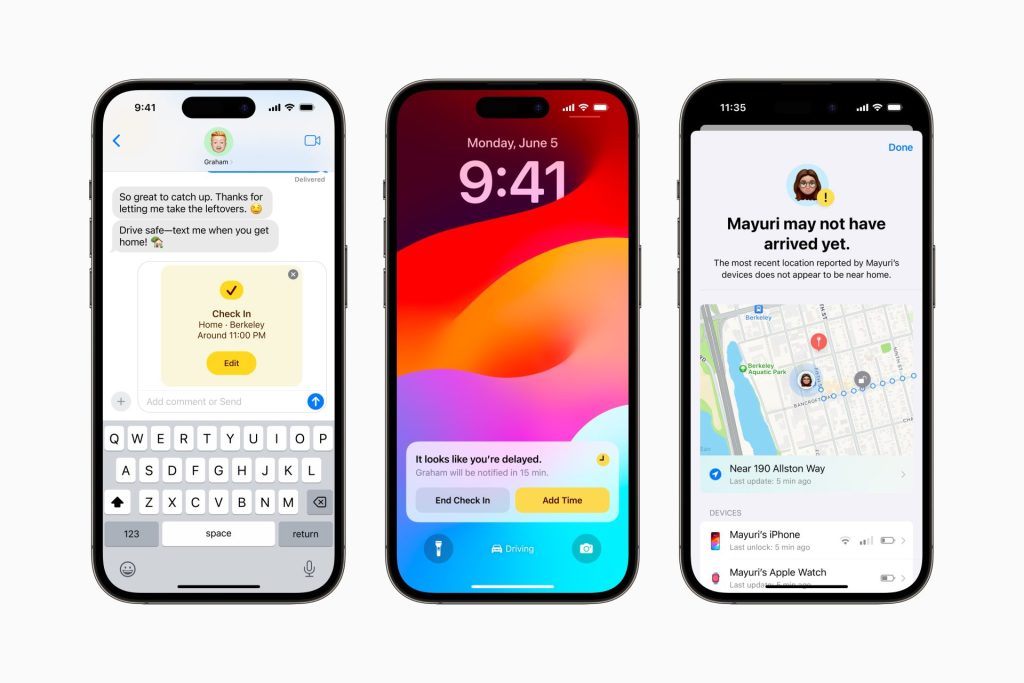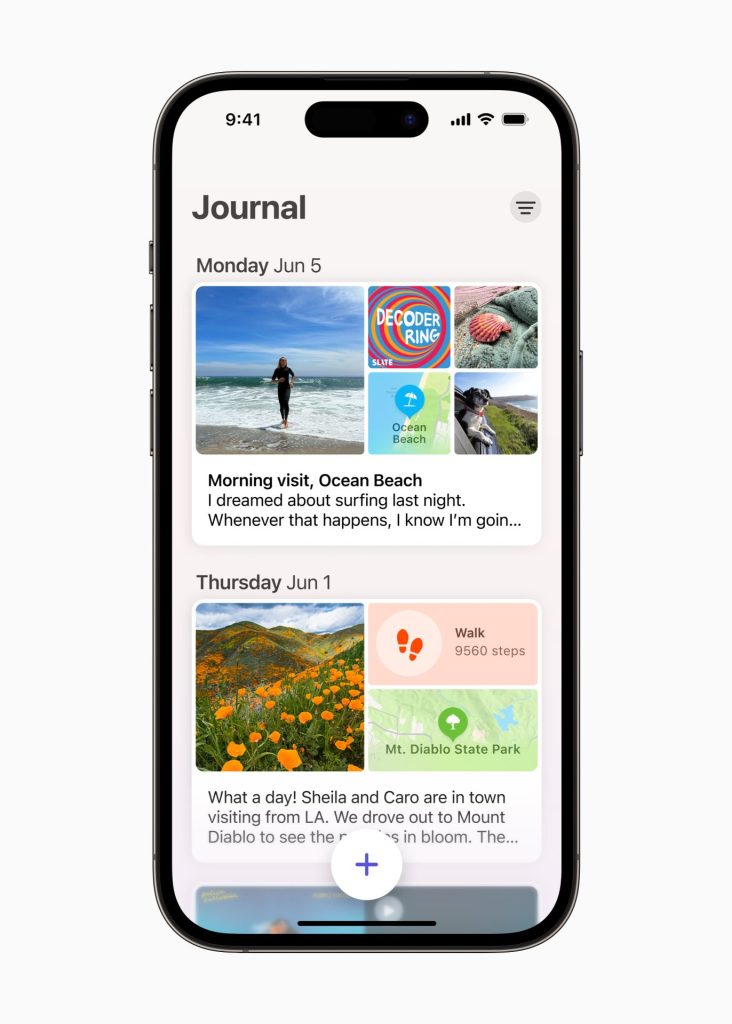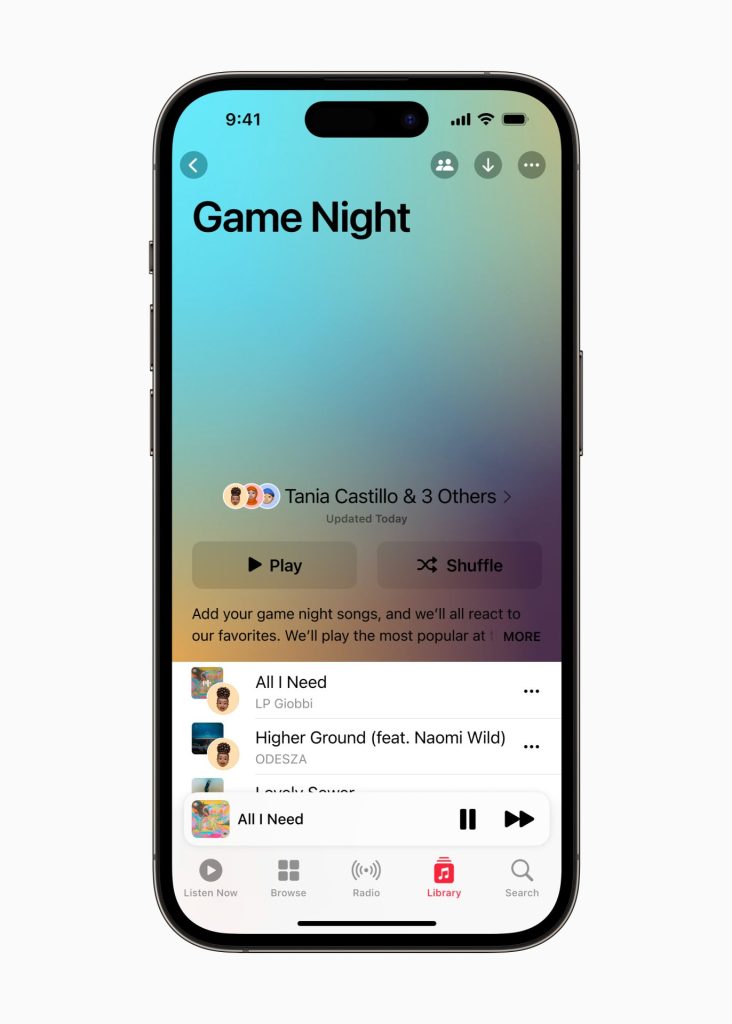All you need to know about the new Apple iOS 17 rollout of September 18, 2023

iPhone users now get a more personal and intuitive experience
Apple, the giant Cupertino, California-headquartered global technology company, launched iOS 17 – the latest version of its mobile operating system – on September 18, 2023.
With iOS 17, millions of iPhone users across the globe can now experience several new features, even though they may have no wish to purchase the latest iPhone 15 or iPhone 15 Pro, which go on retail sale worldwide, including in the Middle East, on September 22, 2023.
iPhone 8 and iPhone X cut off
However, like in 2022, when Apple halted the iPhone 6s, the first generation iPhone SE and the iPhone 7 from the list of devices compatible with iOS 16, some users will be left out in the cold as iOS 17 will not support the iPhone 8 or iPhone X, both released in 2017.
This means users will need an iPhone from 2018 or later to experience the latest iOS 17 update.
On June 5, 2023, Apple announced iOS 17 as a significant release that upgrades the communications experience across the iPhone device, its FaceTime, and Messages features to make sharing even easier with AirDrop and provide more intelligent input that improves the speed and accuracy of typing.
iOS 17 also introduces new experiences with Journal, an app that makes it easy for people to practise gratitude, and StandBy, a new way to view glanceable information when an iPhone is set down and charging.
Craig Federighi, Apple’s SVP of Software Engineering, said: “With iOS 17, we have made the iPhone more personal and intuitive by profoundly considering the features we rely on daily.
“Phone [iPhone], FaceTime, and Messages are central to how we communicate, and this release is packed with updates we think our users will love. We’ve also reimagined AirDrop with new ways to share, autocorrect gets even better, and we are introducing all-new experiences with Journal and StandBy, plus much more. We cannot wait for everyone to try it.”
Enhanced experience
The Phone app is central to the iPhone experience, and it receives a big update with personalised Contact Posters, providing a new way for users to express themselves.

Users can now customise their appearance, bringing a fresh look to incoming calls. They can also choose beautiful treatments for photos or emojis and eye-catching typography and font colours. Contact Posters is also available for third-party calling apps.
Live Voicemail allows users to see real-time transcription as someone leaves a voicemail and the opportunity to pick up while the caller is leaving their message. Calls identified as spam by carriers will not appear as Live Voicemail and will instead be instantly declined. With the power of the Neural Engine, Live Voicemail transcription is handled on-device and remains entirely private.
FaceTime add-ons
FaceTime now supports audio and video messages, so when users call someone unavailable, they can share news that can be seen later.
FaceTime calls also get more expressive with Reactions such as hearts, balloons, fireworks, laser beams, rain, and more. The new effects can be activated through simple gestures, and third-party video calling apps can also take advantage of them.
FaceTime now extends to a TV screen in the home. Powered by Continuity Camera, users can initiate a video call directly from Apple TV, start the ring on an iPhone, and then hand it off to Apple TV to see friends and family on their TV screen. With Center Stage, users have perfect framing even as they move around the room.
Messages upgrade
Messages get significant updates with iOS 17, including an all-new sticker experience with new emoji stickers and the ability to create Live Stickers by lifting subjects from photos.
Users can also add effects to Live Stickers that bring them to life, and a new drawer in the keyboard puts all of a user’s stickers in one place for easier access across iOS.
New Message features enhance the way users communicate. An expandable menu that can be accessed with a simple tap to display iMessage apps gives Messages a sleeker look.
Search gets more powerful and precise with search filters, making it possible for users to start a search and add additional filters to narrow down the results and find exactly what they seek.

A new catch-up arrow indicates where the user last left off in the conversation, and replying inline is as simple as swiping on a text bubble. If a user shares their location, it will update in real-time in the conversation. When sending an audio message, it is transcribed automatically so users can read it at the moment or listen later.
Messages also introduce Check-In, an essential feature for when a user wants to notify a family member or friend that they have made it to their destination safely.
After a user initiates a Check-In, their friend or family member will automatically be notified when the user arrives.
If they are not progressing toward their destination, helpful information will be temporarily shared with the selected contact, such as the device’s location, battery level, and cell service status. Any information transmitted is end-to-end encrypted.
AirDrop and NameDrop sharing
AirDrop makes it easy to share a file with a colleague or send photos to a friend in seconds, and with iOS 17, AirDrop gets new ways to communicate.
NameDrop allows users to easily share contact information by bringing their iPhones or getting an iPhone and Apple Watch together.
With the same gesture, users can also share content or start SharePlay to listen to music, watch a movie, or play a game while nearby between iPhone devices.
Autocorrect and Dictation improvements
Autocorrect receives a comprehensive update with a transformer language model, a state-of-the-art on-device machine learning language model for word prediction — improving the experience and accuracy for users every time they type.
It also receives a refreshed design to support typing better, and sentence-level autocorrections can fix more grammatical mistakes. Users will now receive predictive text recommendations inline as they type. Hence, adding entire words or completing sentences is as easy as tapping the space bar, making text entry faster than ever.
Dictation leverages a new speech recognition model to make it even more accurate.
StandBy glanceable information
iOS 17 introduces StandBy, giving users a full-screen experience with glanceable details designed to be viewed from a distance when an iPhone is on its side and charging.

StandBy is perfect on a nightstand, kitchen counter, or desk. It can be personalised to display beautiful clock styles, favourite photos, or widgets, including Smart Stacks, which surface the proper devices at the right time.
With support for Live Activities, Siri, incoming calls, and more extensive notifications, StandBy makes an iPhone even more valuable when viewed at a distance. When charging with MagSafe, StandBy remembers a user’s preferred view.

It is easy to bring up StandBy anytime by tapping the screen, and it is always available on iPhone 14 Pro with the Always-On display.
Journal for life’s moments
Journal is a new app that helps iPhone users reflect and practise gratitude through journaling, which has been shown to improve wellbeing.

Using on-device machine learning, personalised suggestions can be provided to help inspire a user’s journal entry. Suggestions are intelligently curated from recent activity, including photos, people, places, workouts, and more, making it easy to start a journal entry, and scheduled notifications can help build a journaling habit.
With the ability to lock the app, on-device processing, and end-to-end encryption, Journal is built to protect a user’s privacy and ensure no one, including Apple, can access a user’s entries.
With the new Journaling Suggestions API, developers can add journaling suggestions to their apps.
Additional iOS 17 features you need to know:
- Safari adds more excellent protection for Private Browsing, both from trackers as a user browses and from people who might have access to a user’s device. Advanced tracking and fingerprinting protections further help prevent websites from tracking or identifying a user’s device. Private Browsing now locks when not in use, allowing users to keep tabs open even when stepping away from the device.
- Users can share passwords with a group of trusted contacts for more accessible and more secure password and password sharing. Everyone in the group can add and edit passwords to keep them up to date. Since sharing is through the iCloud Keychain, it is end-to-end encrypted.

- The Health app offers new mental health features. Users can log their daily moods and momentary emotions, see what might contribute to their state of mind, and quickly access depression and anxiety assessments often used in clinics, plus resources available in their region. Additionally, increasing the distance the device is viewed can help children lower their risk of myopia and allow adult users to reduce digital eyestrain. Screen Distance in Screen Time uses the TrueDepth camera to encourage users to move their device farther away after holding it closer than 12 inches from their face for an extended period.

- Maps adds offline maps, so users can download a specific area, access turn-by-turn navigation, see their estimated arrival time, find places in Maps, and more while offline. Maps also make it easier to discover thousands of trails in parks across the United States and support electric vehicle drivers with real-time charging availability information.
- AirTag can be shared with up to five other people, allowing friends and family to keep track of an item in Find My. Everyone in a group can see an item’s location, play a sound, and use Precision Finding to help pinpoint the site of a shared AirTag when nearby. This also works with all other Find My Network accessories.

- Apple Music introduces Collaborative Playlists that make listening to music with friends more accessible. SharePlay in the car allows all passengers to easily contribute to what is playing. Listeners can control the music from their own devices, even if they do not have an Apple Music subscription.

- Sharing content using AirPlay is even easier with on-device intelligence now learning a user’s preferences. AirPlay also works with supported TVs in hotels, allowing users to enjoy their favourite content on the TV when travelling quickly. Built with a foundation of privacy and security, this capability will be available in select hotels before the end of the year, starting with brands from IHG Hotels & Resorts.
- AirPods receive powerful new features, including Adaptive Audio, Personalised Volume, and Conversation Awareness, which redefine the personal audio experience. Plus, improvements to Automatic Switching and call controls make AirPods even easier to use.
- The Home app allows users to view up to 30 days of activity history across door locks, garage doors, alarm systems, and contact sensors. Additionally, two popular HomeKit lock features — tap to unlock and PIN codes — are now available for Matter-compatible locks, providing even more ways to connect the home.
- Reminders features a grocery list that automatically groups added items into categories to make shopping easier. Users can change how the items are grouped, and the list remembers their preferences.
- Visual Look-Up is now available in paused video frames. Now, users can identify food, storefronts, signs, and symbols and lift individual subjects from photos and videos.

- Siri can be activated by simply saying “Siri”. Once activated, users can issue multiple commands in succession without needing to reactivate the assistant.

- In Photos, the People album uses on-device machine learning to recognise more photos of a user’s favourite people, cats, and dogs.
- Privacy updates include the expansion of Communication Safety beyond Messages to help keep children safe when sending and receiving content via AirDrop, Contact Posters, a FaceTime message, and when using the Photos selector to choose the range to send. It also expands to cover video content in addition to still images. A new feature, Sensitive Content Warning, helps adult users avoid seeing unwanted photos and videos. As with Communication Safety, all image and video processing for Sensitive Content Warning occurs on-device, so Apple cannot access the content.
- Accessibility updates include Assistive Access, a customisable interface that helps users with cognitive disabilities use iPhone with greater ease and independence; Live Speech, which gives nonspeaking users the option to type and have their words spoken in person or on phone and FaceTime calls; Personal Voice, which provides users with at risk of speech loss the opportunity to create a voice that sounds like theirs; and Point and Speak, which helps users who are sight-impaired or have low vision read text on physical objects by pointing.
Featured image: Apple launched the iOS 17 update on September 18, 2023. Image: Apple

Last Updated on 1 year by Arnold Pinto













